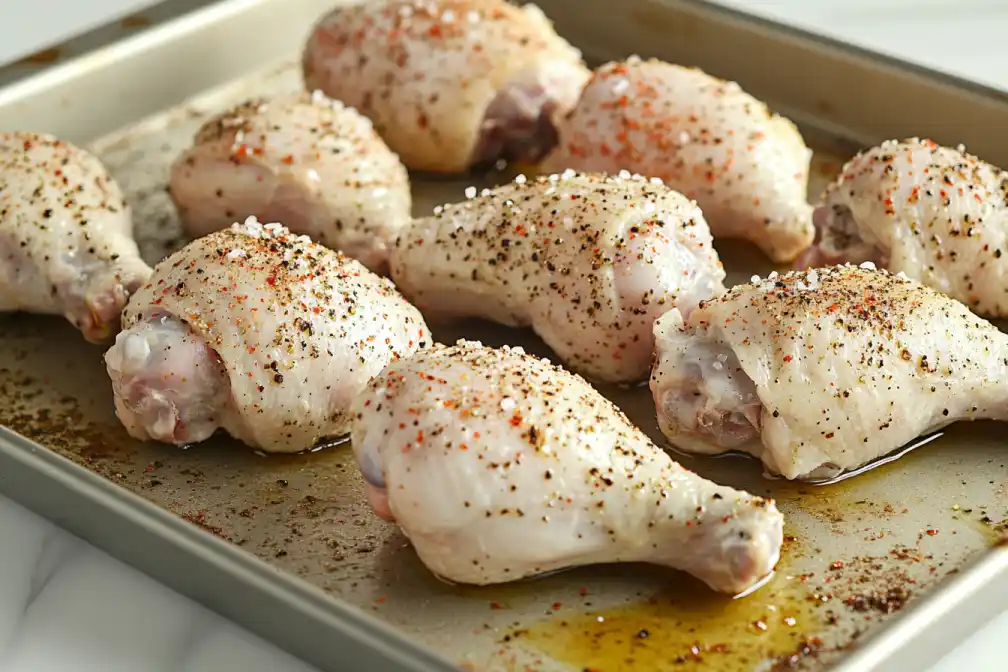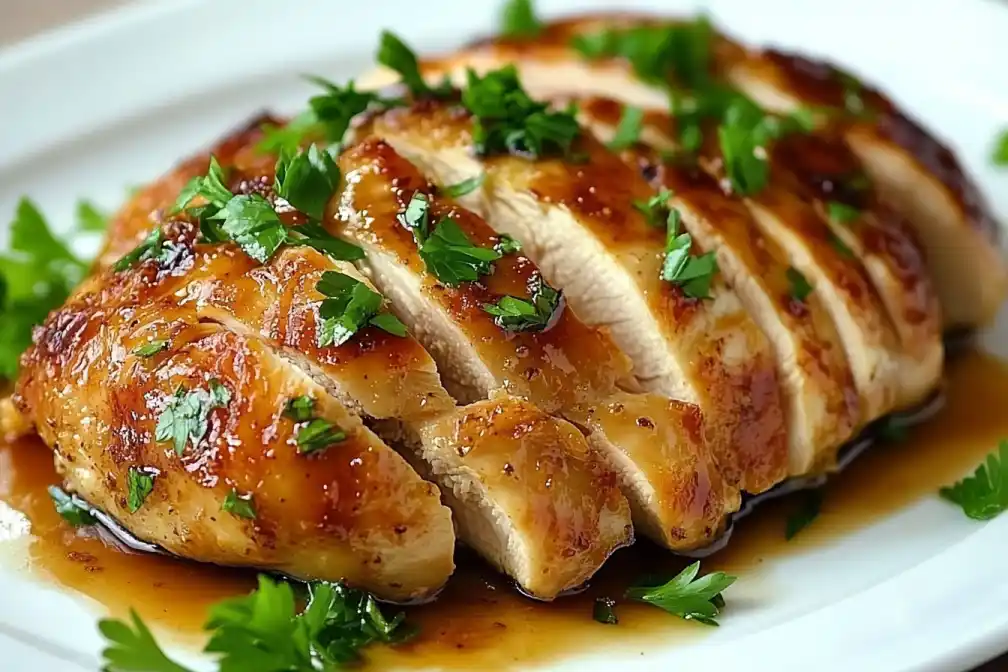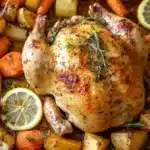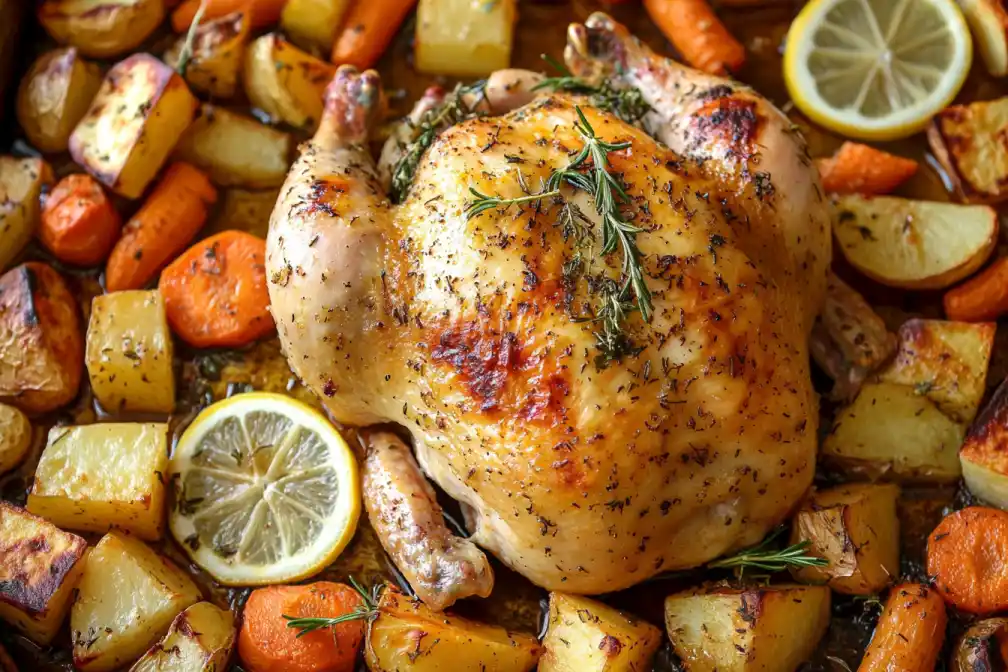Baking chicken in the oven is a go-to method for many home cooks it’s simple, delicious, and versatile. But a common question always arises: Should I cover my chicken when I bake it in the oven? This choice can significantly impact the texture, flavor, and overall result of your dish. Whether you want tender, juicy meat or a crispy, golden finish, understanding the pros and cons of covering your chicken will help you achieve the perfect meal. Let’s dive in!
Understanding the Basics of Baking Chicken
Why Baking Chicken is a Popular Cooking Method

Baking chicken is one of the simplest, most versatile ways to prepare this protein powerhouse. It’s like the ultimate comfort zone for home cooks—no flashy equipment or culinary degrees needed. Just you, your oven, and some imagination! Plus, it’s healthier than frying, as you can skip the excess oil. From crispy drumsticks to juicy breasts, baking offers endless options that suit both casual weeknight dinners and festive feasts.
“Baking chicken is like a blank canvas you can paint it with any flavor you love!”
Factors That Affect Baking Chicken
Here’s the deal: your baked chicken’s success hinges on several factors. The cut of the chicken (breasts, thighs, whole bird), your seasoning, the oven temperature, and yes, whether or not you cover it. These variables can make or break your dish. And let’s not forget the cooking time too long and you’re left with dry, chewy meat; too short, and it’s dangerously undercooked.
Common Issues When Baking Chicken
If you’ve ever pulled a rubbery, dry chicken from the oven, you know how disappointing it can be. Lack of flavor, uneven cooking, or that dreaded dryness can ruin your meal. But don’t fret understanding these pitfalls is half the battle. One of the most debated solutions? Covering your chicken during baking. Let’s unpack that further.
Should I Cover My Chicken When I Bake It in the Oven?
When preparing baked chicken, many people wonder, “Should I cover my chicken when I bake it in the oven?” The answer isn’t always straightforward. Covering your chicken can lock in moisture, making the meat tender and juicy. However, it may prevent the chicken from developing a golden, crispy exterior.
Why Does Covering Chicken Matter When Baking?
If you’ve asked yourself, Should I cover my chicken when I bake it in the oven? here’s the good news: covering your chicken helps retain moisture. This is especially useful for lean cuts like chicken breasts, which can dry out quickly.
The Pros and Cons of Covering Chicken While Baking

On the flip side, covering your chicken can keep it from achieving that crispy, golden-brown finish we all adore. Instead of beautifully caramelized skin, you might end up with a soggy exterior. For those seeking that Instagram-worthy crunch, leaving the chicken uncovered might be the better option.
Types of Covers: Foil vs. Lid
When it comes to covering, you have a couple of choices. Aluminum foil is the most common—it’s cheap, effective, and flexible. But if you’re using a baking dish with a lid, that’s another excellent option. Keep in mind that the tighter the cover, the more moisture it retains.
How Covering Affects Different Chicken Cuts
Should I cover my chicken when I bake it in the oven?
For whole chickens, the decision to cover depends on your goal. If you want fall-off-the-bone tenderness, cover it for most of the cooking time and then uncover it toward the end for crispy skin. This hybrid method gives you the best of both worlds.
Chicken Breasts: Achieving Moist Results
Chicken breasts are the prima donnas of the poultry world prone to drying out at the slightest misstep. Covering them ensures they stay moist and juicy. Add a bit of olive oil or butter for an extra layer of moisture, and voilà, no more dry chicken breasts!
Should I Cover Chicken Thighs for Tender Results?
Thighs and drumsticks are more forgiving because of their higher fat content. If you’re after a crispy texture, bake them uncovered. For a softer, melt-in-your-mouth experience, cover them for at least part of the cooking time.
Tips for Perfect Oven-Baked Chicken
When to Cover Chicken to Avoid Dryness in the Oven
Great baked chicken starts with bold seasoning. A basic blend of salt, pepper, garlic powder, and paprika can work wonders. If you have time, marinate your chicken for a few hours—or even overnight. It’s like giving the chicken a spa day before the main event.
Should You Partially Cover Chicken While Baking?
The sweet spot for baking chicken is generally around 375–400°F. The cooking time varies by cut: 25-30 minutes for breasts, 35-40 minutes for thighs, and about 90 minutes for a whole chicken. Keep a close eye, though—ovens can be as temperamental as toddlers!
Using a Meat Thermometer for Accuracy
A meat thermometer is your best friend in the kitchen. For chicken, you’re looking for an internal temperature of 165°F. This ensures safety without sacrificing flavor or texture. Stick the thermometer into the thickest part of the meat, avoiding bones for an accurate reading.
Alternatives to Covering Chicken in the Oven
Creating a Moist Environment Without Covering
What if you’re out of foil or lids? No worries! Adding liquid to the baking dish—like chicken stock, white wine, or even water—creates steam, keeping the chicken moist. Just remember to baste the chicken occasionally for best results.
Using Cooking Techniques Like Basting
Basting is another excellent way to lock in moisture. Simply spoon the pan juices over the chicken every 15-20 minutes. It’s like a little TLC for your bird. Sure, it takes a bit more effort, but the juicy payoff is so worth it!
Bonus Tips: Making Your Baked Chicken Even Better
Experimenting with Different Seasonings
Why stick to salt and pepper when there’s a world of flavors to explore? Try seasoning blends like Cajun, Italian herbs, or even sweet-and-savory rubs with brown sugar and paprika. Don’t be afraid to mix it up; your chicken is your playground!
Adding Vegetables for a One-Pan Meal
Make your baked chicken meal more exciting by tossing in veggies like carrots, potatoes, and green beans. They soak up the chicken’s juices as they cook, becoming little flavor bombs. Plus, it saves you from washing extra dishes win-win!
Incorporating Sauces and Glazes
If you want your chicken to really shine, consider adding a sauce or glaze during the last 10 minutes of baking. BBQ sauce, honey mustard, or even a garlic butter glaze can take your dish from good to finger-licking great.
Making Use of Leftovers
Baked chicken leftovers can be transformed into other delicious meals. Think chicken salads, wraps, or even hearty soups. Store them in an airtight container, and they’ll last up to four days in the fridge. Talk about getting more cluck for your buck!
Creative Recipe Ideas for Baked Chicken
Need some inspiration? Here are a couple of baked chicken recipes to try:
Lemon Herb Baked Chicken
- Ingredients:
- 4 chicken breasts
- 2 lemons (sliced)
- 1 tbsp olive oil
- 1 tsp garlic powder
- 1 tsp thyme
- Salt and pepper to taste
- Instructions: Preheat the oven to 375°F. Arrange chicken breasts in a baking dish, drizzle with olive oil, and season with garlic powder, thyme, salt, and pepper. Lay lemon slices on top. Cover with foil and bake for 25-30 minutes, then uncover and broil for 5 minutes for a golden finish. Serve and enjoy!
Honey Mustard Chicken Thighs
- Ingredients:
- 6 chicken thighs
- 2 tbsp honey
- 2 tbsp Dijon mustard
- 1 tsp smoked paprika
- 1 tsp garlic powder
- Salt and pepper to taste
- Instructions: Preheat the oven to 400°F. Mix honey, mustard, paprika, garlic powder, salt, and pepper in a bowl. Coat chicken thighs with the mixture and arrange them in a baking dish. Bake uncovered for 35-40 minutes, basting halfway through for extra flavor. Serve hot!
Common Mistakes When Baking Chicken and How to Avoid Them
Overcooking or Undercooking the Chicken
One of the biggest heartbreaks in the kitchen is cutting into your chicken only to find it dry as the desert or dangerously raw. Overcooking often results from leaving chicken in the oven too long, while undercooking stems from misjudging the time or temperature. To avoid these pitfalls, set a timer and always use a meat thermometer. Trust me, it’s a game-changer.
Using the Wrong Baking Dish
The type of baking dish you use plays a huge role in the outcome. Glass or ceramic dishes retain heat well, making them ideal for slow, even cooking. Metal pans, on the other hand, heat up quickly and are perfect for achieving that coveted crispy texture. Choosing the right dish is like pairing the right shoes with an outfit it just works better.
Not Resting the Chicken Before Serving
Imagine pulling your perfectly baked chicken out of the oven and slicing into it immediately. What happens? All those delicious juices escape! Resting the chicken for 5–10 minutes allows the juices to redistribute, making each bite flavorful and succulent.
Expert Opinions on Covering Chicken While Baking
Culinary Professionals Weigh In
Most professional chefs agree: whether to cover or not depends on the dish you’re aiming for. Covering helps maintain moisture, which is great for casseroles or dishes where tenderness is the goal. However, for crispy skin, they recommend baking uncovered for at least part of the cooking process. “Let the chicken breathe,” some might say, “but not too much.”
What Home Cooks Say About Covering Chicken
Home cooks are split on the issue. Some swear by covering the chicken for that melt-in-your-mouth softness, while others insist on uncovering it to achieve a golden, crunchy crust. One common consensus? Experiment! Every oven and recipe is different, so find what works best for you.
FAQs
How Does Covering Affect the Texture of Chicken?
Covering traps steam, making the chicken tender and moist. However, it prevents the skin from crisping up, so you’ll need to uncover it for the last few minutes if you want some crunch.
What Happens If You Bake Chicken Without Covering It?
Uncovered chicken allows for a crispy texture and caramelized flavor. The downside? It’s easier to dry out, so watch your timing closely.
Can I Switch Between Covered and Uncovered Baking?
Absolutely! Many recipes call for covering chicken for most of the cooking time to lock in moisture, then uncovering it toward the end for a crispy finish. It’s the best of both worlds.
Does Covering Chicken Change the Cooking Time?
Yes, slightly. Covered chicken often cooks faster due to the trapped steam, so check the internal temperature earlier than you would for uncovered chicken.
Does baking chicken uncovered make it healthier?
Baking uncovered doesn’t necessarily make it healthier, but it can reduce steam buildup, making the chicken less soggy. For a healthy and crispy twist, check out u003ca href=u0022https://majesticrecipes.com/crispy-healthy-baked-chicken-cutlet-recipes-youll-love/u0022u003ethis baked chicken cutlet recipeu003c/au003e for inspiration.
What’s the Best Temperature for Baking Chicken?
For juicy, perfectly cooked chicken, bake it at 375–400°F. This range balances even cooking with retaining moisture, whether covered or uncovered.
To Cover or Not to Cover – What’s Best for Your Chicken?
So, Should I cover my chicken when I bake it in the oven? The answer is—it depends! If you’re aiming for tender, juicy meat, covering is your best bet. Want crispy, golden skin? Uncover it, at least for the final stretch. Ultimately, the choice boils down to personal preference and the type of dish you’re preparing. Experiment, have fun, and enjoy the delicious results!
Print
Baked Chicken: Covering or Not?
- Total Time: 40 minutes
- Yield: 4 servings 1x
- Diet: Poultry
Description
A comprehensive guide on the pros and cons of covering chicken while baking for perfect results.
Ingredients
- 4 chicken breasts
- 2 lemons (sliced)
- 1 tbsp olive oil
- 1 tsp garlic powder
- 1 tsp thyme
- Salt and pepper to taste
Instructions
- Preheat the oven to 375°F.
- Arrange chicken breasts in a baking dish, drizzle with olive oil, and season with garlic powder, thyme, salt, and pepper.
- Lay lemon slices on top.
- Cover with foil and bake for 25-30 minutes.
- Uncover and broil for 5 minutes for a golden finish.
- Serve and enjoy!
Notes
Experiment with different seasonings and vegetables to enhance flavor.
- Prep Time: 10 minutes
- Cook Time: 30 minutes
- Category: Main Course
- Method: Baking
- Cuisine: American
Nutrition
- Serving Size: 1 serving
- Calories: 350
- Sugar: 3g
- Sodium: 500mg
- Fat: 10g
- Saturated Fat: 2g
- Unsaturated Fat: 5g
- Trans Fat: 0g
- Carbohydrates: 5g
- Fiber: 1g
- Protein: 35g
- Cholesterol: 85mg

